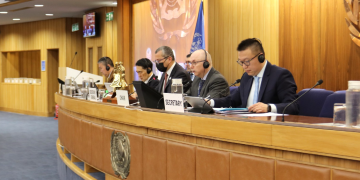High-performing teams require keen recruitment, staffing, and training strategies, all of which should focus on creating a diverse and inclusive (D&I) culture. In fact, research shows that inclusive teams perform up to 30% better in high-diversity environments.
A diverse culture isn’t just about an employee’s physical appearance; it’s about how employees think. With diversity comes multiple perspectives. When team members bring a variety of backgrounds, cultures, and experiences, they are more likely to solve problems and be innovative.
This can lead to more thoroughly vetted results. Leaders are also more likely able to make better decisions based on facts. Inclusive management also optimizes talent and productivity, leading to higher-performing teams.
But how can you foster an inclusive work environment? Creating an inclusive environment is something leaders of teams, both big and small, need to consider so everyone is welcome, involved, and able to share their ideas.
Access to top talent
Hiring top talent is what every employer wants, but it’s only possible if diverse candidates are all fairly considered. When diversity and inclusion exist, employers give themselves a greater chance of gaining access to a larger talent pool.
As a result, this ensures that they can hire employees with the skills, experience, and knowledge needed to build high-performance teams. Employee performance in diverse organizations is 12% higher than in companies with no inclusivity efforts.
Increased sense of belonging
With more 76% of job seekers saying a diverse and inclusive workforce is essential when evaluating companies and job offers, this should be critical for employers. Developing a culture that encourages D&I creates a sense of belonging for all employees.
Namely, Harvard Business Review reports that having a high sense of belonging can increase job performance by 56% or more, reduce turnover by 50%, and significantly decrease the number of sick days.
Higher levels of trust
Environments that encourage D&I practices promote trust and employee engagement among employees. This trust leads to a feeling of psychological safety, which, in turn, leads to respect. Without either of these, teams and their leaders are unlikely to work well together, much less increase team productivity and performance.
What is more, research shows that organizations that trust their employees are more likely to increase their average employee engagement by 76%. This has become extremely important as many organizations shift to a remote or hybrid team model. Trust in the workplace allows employees to feel secure, reduces turnover, and increases engagement.
Increased employee engagement
Currently it’s estimated that 83% of millennials are more actively engaged in their work when their employers support D&I initiatives. There’s a direct relationship between diversity practices and employee engagement. If employees feel valued and included, they are far more likely to become engaged and remain so.
Additionally, when employees are engaged in workplace activities, they are more motivated and do their best work. This is often reflected in their individual and team performance. Typically, companies that can achieve higher employee engagement see 20% higher productivity than the competition, and higher productivity increases team and company performance overall.
Better decision-making
With 78% of employees surveyed saying they work for a company that lacks diversity in leadership, it’s bound to impact output and decision-making. When employees feel this way, it affects their performance.
On the surface, it may seem that a team that thinks alike is the best way to make decisions. This is no longer the case: Diversity and inclusion matter. As a matter of fact, it’s estimated that diverse and inclusive companies are 60% more likely to outperform their peers where decision-making is concerned.
Create a transparent and honest culture
Difficult conversations are tough, especially in the workplace. When an organization builds a culture where feedback is valued, it will create an open line of communication between the team. This can be done by incorporating feedback into your regular communication and scheduling regular in-person and video chats to have these conversations. With regular conversations, team members will feel more comfortable sharing their thoughts.
Be an ally
Whether you’re a leader or an individual contributor, you can be an ally for your colleagues at work. In fact, during a TED Talk by Melinda Epler, she provides three simple ways to create a more inclusive workplace:
- Don’t interrupt: Take a step back and listen to your coworkers.
- Advocate for underrepresented individuals: Invite them to share their opinion and encourage them to take new opportunities.
- Change someone’s life significantly: Commit to making positive changes on your team.
Acknowledge your unconscious bias
Unconscious bias is often identified as any prejudice or assumptions that are made for or against an individual or group. Subtle biases can lead to exclusion. Leaders should ensure all of their team members have access to necessary training, personal development, professional networks, etc. so all individuals or groups are included.

































































